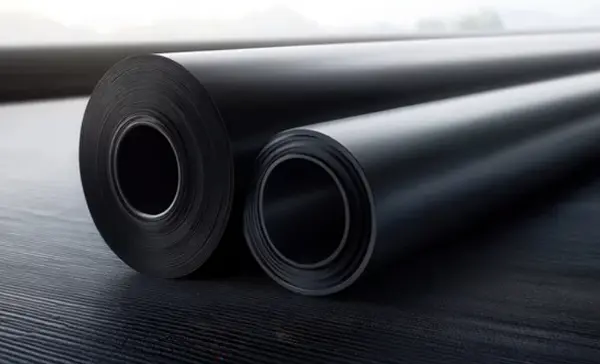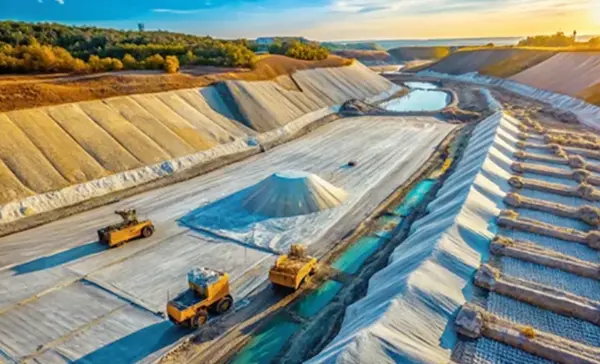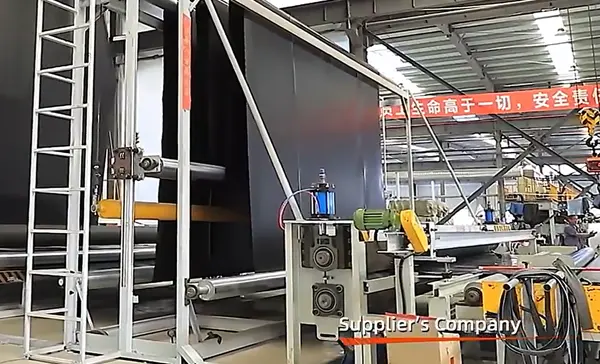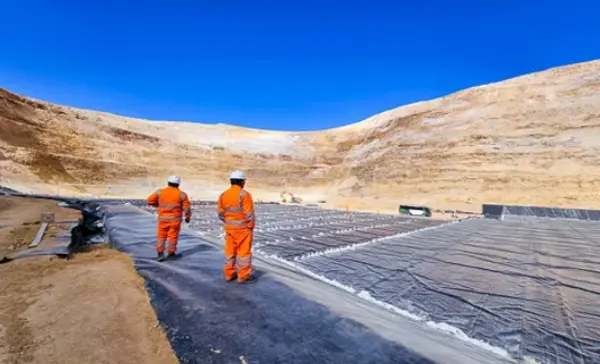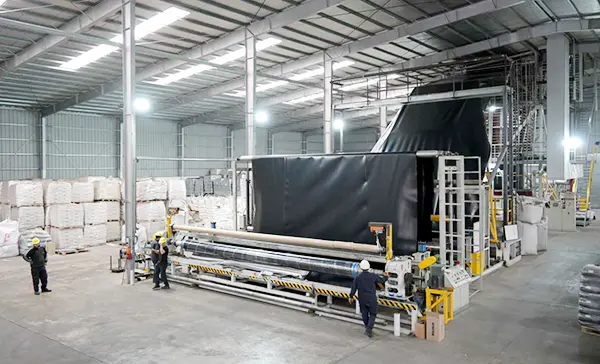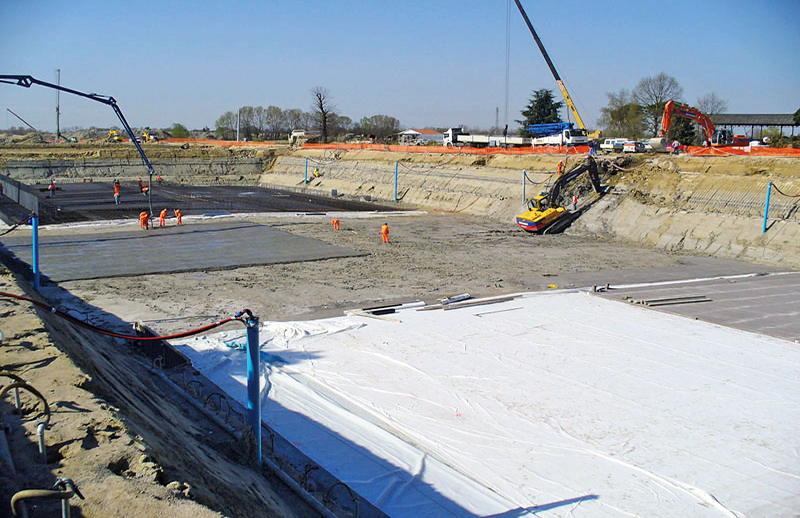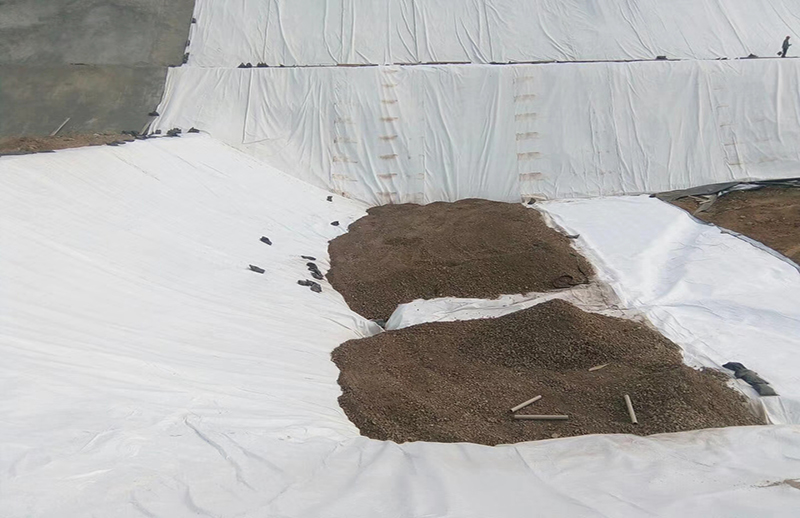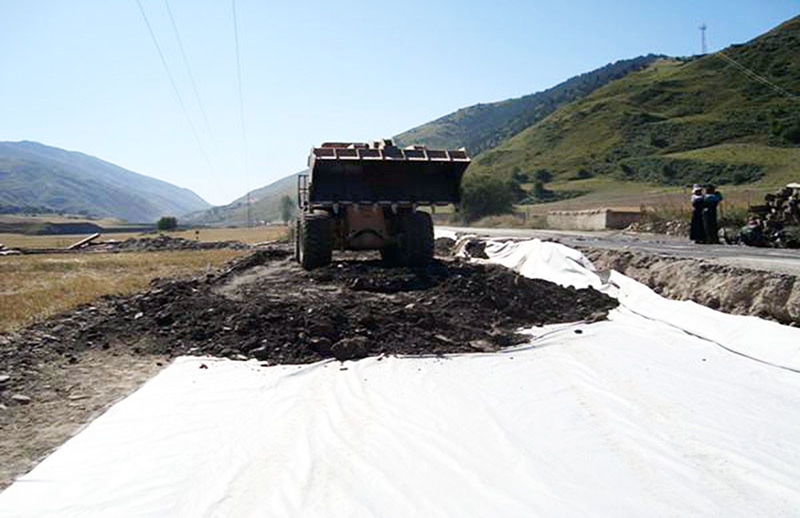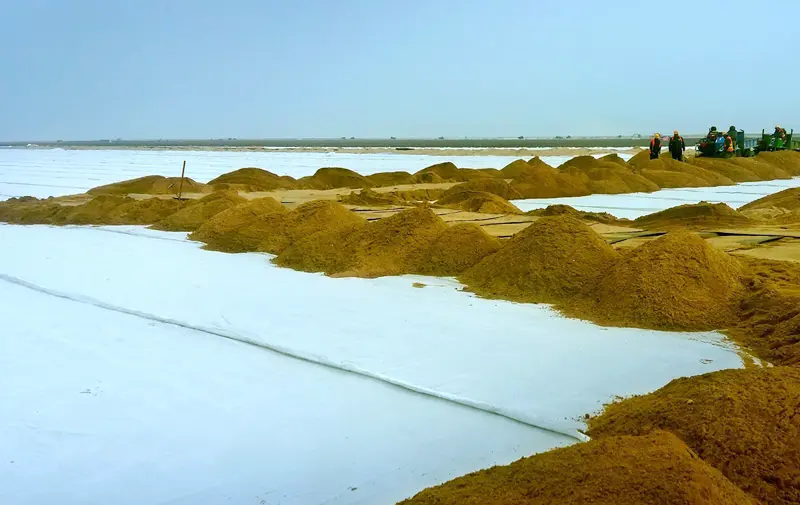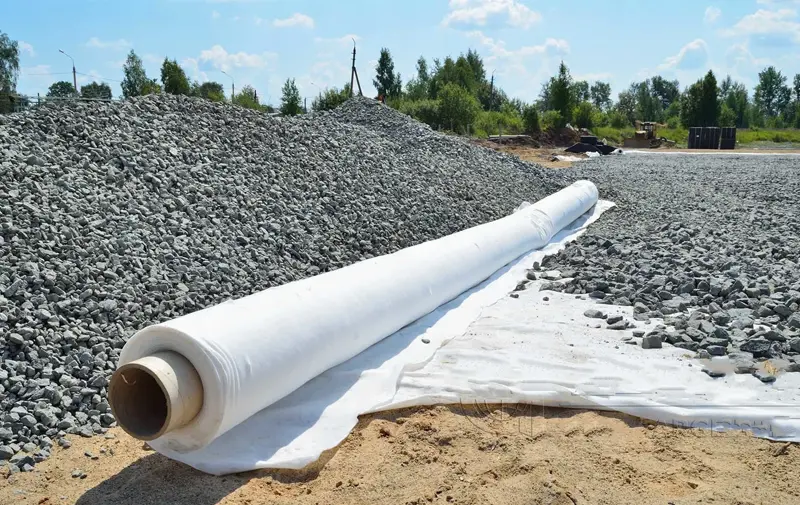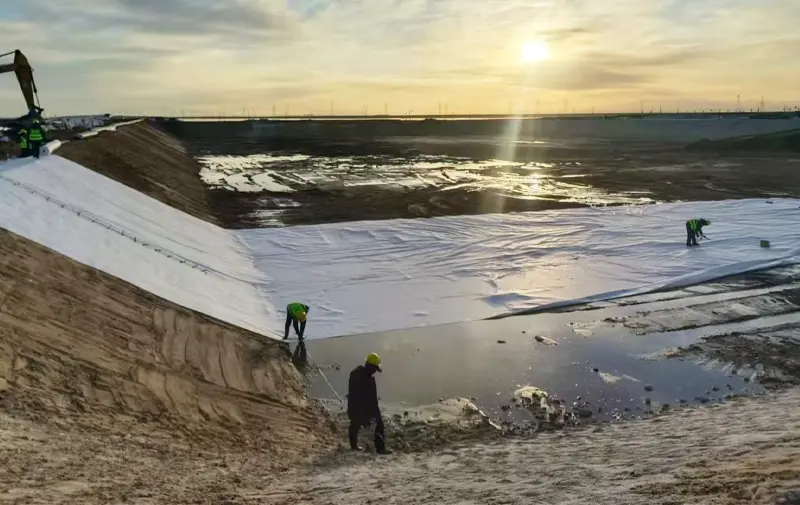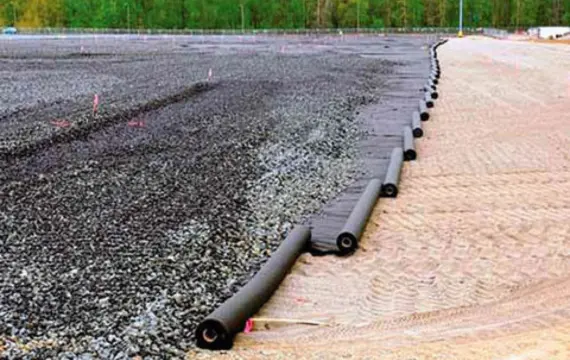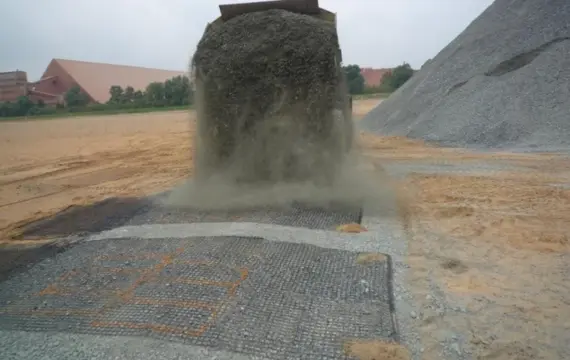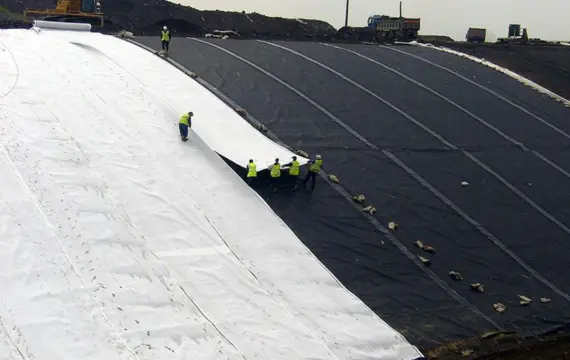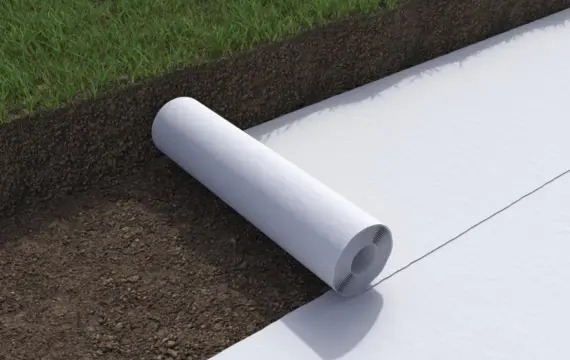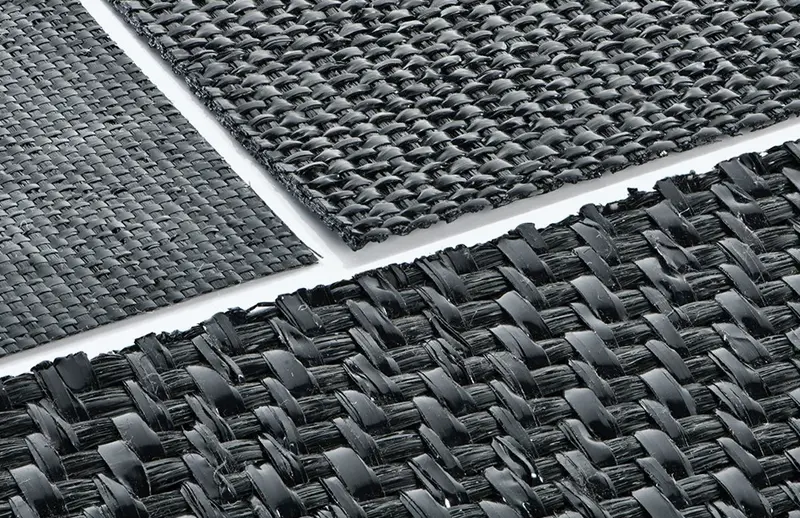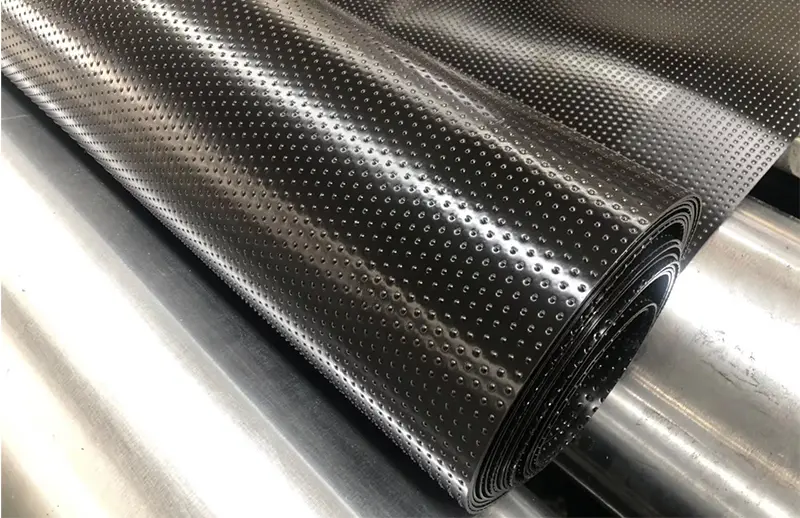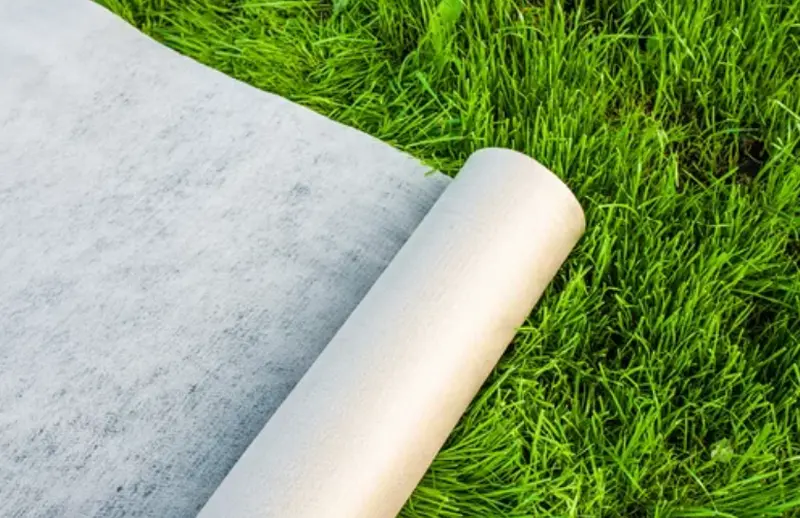
Nonwoven Geotextile Fabric
Nonwoven Geotextile Fabric Information
Weight : 100gsm – 1200gsm
Width: 1m – 6m
Length: 50-200m
Material: Polyester
Nonwoven Geotextile Fabric are light weight, good water permeability, good tensile ,strength and corrosion resistance, they are the ideal material for geotechnical engineering.
1)anti-aging, the product has very high anti-ultraviolet radiation ability, not easy to degradation.
2) High temperature resistance to up to 230℃ maintaining structure stability and original physical properties.
3) High flat drainage and vertical permeability.
4) High creep resistance.
5) Resistance of erosion of chemicals in soil with the corrosion of gasoline and diesel etc.
6) High elongation under certain stress, thus able to adapt to uneven and irregular bases.
Nonwoven Geotextile has good air and water permeability to let water flow through it so as to effectively control sandrock running-down.Geotextile has good water transmissibility, it can form drainage channels inside soil mass to drain redundant liquid and air out of the soil mass.
Nonwoven Geotextile Features
Nonwoven Geotextile helps to enhance the soil mass’ tensile strength and non-deformability and structural stability so as to improve soil mass quality.It can effectively make the concentrated stress diffuse, transfer or decompound, and prevent the soil mass against the destruction of outside force.
Nonwoven Geotextile can prevent the mixture of sandstone, soil mass and concrete of upper and lower layers.Its mesh is hard to jam by virtue of the compliancy and motility of the reticulation formed by indefinite form fibrous tissue.High water permeability-it can keep good water permeability even in the pressure of soil and water.
Corrosion resistant-it is made from polypropylene fiber or terylene or other chemical fiber, featuring resistance to acid and alkali and oxidation, non-corroding, no worm-eaten.Easy construction-low weight, easy operation, simple construction.
|
Mechanical Properties |
Test Method |
Unit |
DK150 |
DK200 |
DK250 |
DK300 |
DK350 |
|
|
Tensile Strength |
MD |
ASTM D4595 |
kN/m |
11 |
14 |
17 |
19 |
24 |
|
CMD |
10 |
12 |
15 |
17 |
21 |
|||
|
Tensile Elongation |
ASTM D4595 |
% |
≥40 |
≥40 |
≥40 |
≥40 |
≥40 |
|
|
Grab Strength |
MD |
ASTM D4632 |
kN |
600 |
850 |
1000 |
1250 |
1450 |
|
CMD |
550 |
700 |
900 |
1100 |
1250 |
|||
|
Grab Elongation |
ASTM D4632 |
% |
≥40 |
≥40 |
≥40 |
≥40 |
≥40 |
|
|
Trapezoidal Tear |
MD |
ASTM D4533 |
kN |
300 |
350 |
430 |
490 |
540 |
|
CMD |
270 |
330 |
400 |
450 |
510 |
|||
|
CBR Puncture strength |
ASTM D6241 |
N |
1800 |
2300 |
2700 |
3200 |
3600 |
|
|
Apparent Opening Size(O90) |
ASTM D4751 |
mm |
0.11 |
0.11 |
0.1 |
0.09 |
0.09 |
|
|
Water Flow Q100 |
ASTM D4491 |
Lm²/s |
130 |
100 |
80 |
70 |
70 |
|
|
Weight |
ASTM D5261 |
g/m2 |
150 |
200 |
250 |
300 |
350 |
|
|
Thickness |
ASTM D5199 |
mm |
1.1 |
1.5 |
1.8 |
2.3 |
2.5 |
|
|
Roll width |
m |
6 |
6 |
6 |
6 |
6 |
||
|
Roll length |
m |
200 |
150 |
100 |
100 |
100 |
||
|
Mechanical Properties |
Test Method |
Unit |
DK400 |
DK450 |
DK500 |
DK600 |
DK800 |
|
|
Tensile Strength |
MD |
ASTM D4595 |
kN/m |
27 |
30 |
37 |
41 |
50 |
|
CMD |
25 |
28 |
34 |
38 |
45 |
|||
|
Tensile Elongation |
ASTM D4595 |
% |
≥40 |
≥40 |
≥40 |
≥40 |
≥40 |
|
|
Grab Strength |
MD |
ASTM D4632 |
kN |
1700 |
1900 |
2100 |
2500 |
4000 |
|
CMD |
1450 |
1600 |
1800 |
2150 |
3400 |
|||
|
Grab Elongation |
ASTM D4632 |
% |
≥40 |
≥40 |
≥40 |
≥40 |
≥40 |
|
|
Trapezoidal Tear |
MD |
ASTM D4533 |
kN |
630 |
710 |
770 |
920 |
1200 |
|
CMD |
610 |
690 |
750 |
900 |
1100 |
|||
|
CBR Puncture strength |
ASTM D6241 |
N |
4400 |
4800 |
5800 |
6900 |
7900 |
|
|
Apparent Opening Size(O90) |
ASTM D4751 |
mm |
0.08 |
0.08 |
0.08 |
0.08 |
0.07 |
|
|
Water Flow Q100 |
ASTM D4491 |
Lm²/s |
60 |
60 |
50 |
40 |
30 |
|
|
Weight |
ASTM D5261 |
g/m2 |
400 |
450 |
500 |
600 |
800 |
|
|
Thickness |
ASTM D5199 |
mm |
2.6 |
2.8 |
3 |
4.2 |
5.5 |
|
|
Roll width |
m |
6 |
6 |
6 |
6 |
6 |
||
|
Roll length |
m |
80 |
80 |
50 |
50 |
50 |
||
Non-woven Geotextile provides effective and economical solution of separation, filtration, drainage, protection and reinforcement functions for engineering projects. Such as Highway(including temporary road),Landfill,bank slope protection,Agricultural engineering,Landscape Pond.
These geotextiles are highly permeable and can elongate when subjected to pulling forces. You can use them in applications that require separation, filtration and drainage capabilities. They also happen to be the most popular geotextiles type.
- Filtration
When water passes from a fine-grained to a coarse grained layer, Non-woven Geotextiles can retain fine particles well. Such as when water flows from a sandy soil into a Geotextile wrapped gravel drain.
- Separation
Separate two layers of soil with different physical properties, such as the separation of road gravel from soft sub-base materials.
- Drainage
TO drain liquid or gas from the plane of the fabric, which leads to draining or venting of the soil, such as the gas vent layer in a landfill cap.
- Reinforcement
To improve the load bearing capacity of a specific soil structure, such as the reinforcement of a retaining wall.
Geotextile Materials
The frequently applied materials in the production of geotextiles are polypropylene and polyester. Still, subject to the intended usage, you may employ either synthetic or organic fiber in the geotextile fabric.
On that account, let’s discuss the common materials used in the manufacturing of geotextile membrane:
Physical Properties of Geotextile
Specific Gravity
Specific gravity is a comparison of the density of a geotextile material to the density of water. Geotextiles whose specific gravity is greater than that of water are denser and will sink in water. Those with a specific gravity less than 1 will float on water. For applications where buoyancy is key you have to consider the specific gravity of the material.
Thickness
Thickness refers to the distance between two opposite sides of a geotextile material, usually measured in millimeters (mm) or inches (in). Thicker geotextile products provide better strength and longevity in the desired areas of applications.
Stiffness
Stiffness characterizes the ability of a geotextile material to go back to its original shape after being exposed to external forces. You have to consider stiffness where your project is on an irregular surface.
Density
Density is the mass a geotextile material per unit volume. It is typically expressed in grams per cubic centimeter (g/cm³). Geotextiles with higher density have greater resistance to penetration and reduced pore spaces. Low density will offer your project increased porosity.
Hydraulic Properties of Geotextiles
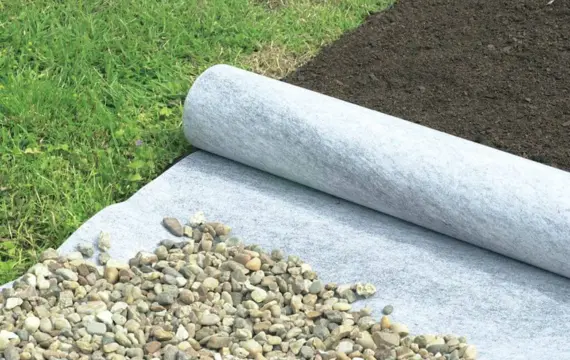
Porosity
Porosity is the number of openings or pores within a geotextile material. It indicates to you the material’s ability to contain and transmit gasses and liquids. Geotextiles with higher porosity have more interconnected voids, allowing for increased water flow and better drainage.
Permittivity
Permittivity refers to the hydraulic conductivity of a geotextile material under stress by compression forces. Geotextiles with higher permittivity allow for improved water flow across their plane, ensuring you of less buildup of hydrostatic pressure.

